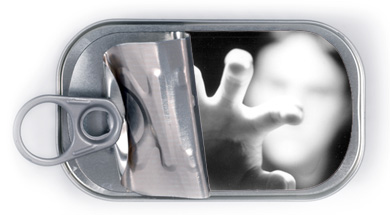The rise of the Koobface social networking worm
A new McAfee Labs report shows a significant spike in instances of the Koobface social networking worm and a dramatic increase in spam. McAfee Labs also saw continued increases in the number and complexity of targeted threats, including information-gathering Trojans and threats targeting systems’ master boot records (MBRs).

McAfee Labs found almost three times as many samples of Koobface as were seen in the previous quarter, which is a high point for the social networking worm that targets Facebook, Twitter and other social networking service users. After three years of stagnation, spam email volume rose.
One significant element behind this growth in North America was the return of “pump and dump” spam campaigns, which targeted would-be investors hoping to capitalize on all-time equity market highs. The McAfee Labs report showed the continued increases in Android malware, malicious web URLs and overall malware samples.
But the increase in the number and sophistication of targeted APTs represented the most notable evolution in the threat landscape, as information becomes as valuable as money on the cybercrime landscape. The report found a 30 percent increase in MBR-related malware and new instances of password-stealing Trojans being repurposed to capture information on individuals and organizations beyond the financial services industry.
“Cybercriminals have come to appreciate that sensitive personal and organizational information are the currency of their “hacker economy,'” said Vincent Weafer, senior vice president, McAfee Labs. “The resurrection of Koobface reminds us that social networks continue to present a substantial opportunity for intercepting personal information. Within the enterprise, we see password-stealing Trojans evolving to become information-gathering tools for cyber-espionage attacks. Whether they target login credentials or intellectual property and trade secrets, highly-targeted attacks are achieving new levels of sophistication.”
Each quarter, the McAfee Labs team of more than 500 multidisciplinary researchers in 30 countries monitors the global threat landscape, identifying application vulnerabilities, analyzing and correlating risks, and enabling instant remediation to protect enterprises and the public. This quarter, McAfee Labs identified the following developments:
Koobface Trojan. Koobface, a worm first discovered in 2008, had been relatively flat for the last year yet it tripled in the first quarter of 2013 to levels never previously seen. The resurgence demonstrates that the cybercriminal community believes that social network users constitute a very target-rich environment of potential victims.
Spam volume. McAfee Labs found the first increase in global spam volume in more than three years. In addition to popular “pump and dump” scams, a surge in growth hormone offers and an escalation of spam campaigns in emerging markets accounted for category growth.
Targeted espionage. McAfee’s latest analysis of the Citadel Trojan found that criminals have re-purposed the bank account threat to steal personal information from narrowly targeted victims within organizations beyond financial services. The industry should expect to see more instances of banking malware used for cyber-espionage operations within non-financial and government organizations.
MBR attacks. The 30 percent increase in Q1 MBR-related threats included instances of StealthMBR, TDSS, Cidox, and Shamoon malware. Key to performing startup operations, MBRs offer an attacker a wide variety of system control, persistence, and deep penetration capabilities. The category has set record highs over the last two quarters.
Malicious URLs. The number of suspicious URLs increased 12 percent as cybercriminals continued their movement away from botnets as the primary distribution mechanism for malware. Malicious websites launching “drive-by downloads” have the notable advantage of being more nimble and less susceptible to law enforcement takedowns.
Mobile malware. While the growth of mobile malware declined slightly during the quarter, Android malware still managed to increase by 40 percent.
PC malware. New PC malware samples increased 28 percent, adding 14 million new samples to McAfee’s malware “zoo” of more than 120 million unique malware threats.
UPDATE: McAfee has issued a correction of the report findings, saying that they have made a counting error and that Koobface has, in fact, been on a “continuing decline since Facebook published its landmark post ‘Facebook’s Continued Fight Against Koobface’ nearly a year and a half ago.”